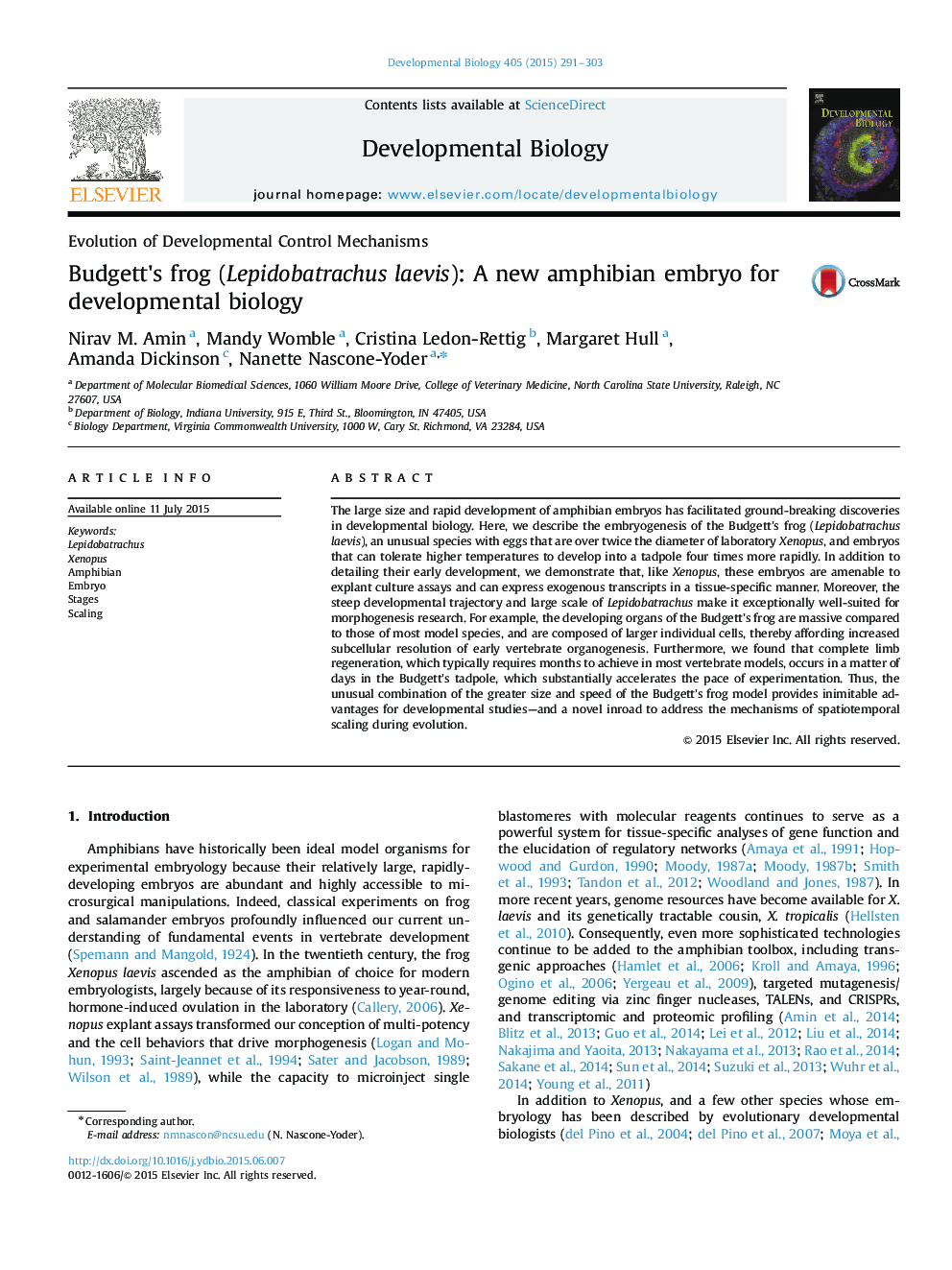| Article ID | Journal | Published Year | Pages | File Type |
|---|---|---|---|---|
| 2172848 | Developmental Biology | 2015 | 13 Pages |
•Development of the Budgett's frog, Lepidobatrachus laevis, as compared to Xenopus laevis.•L. laevis embryos are amenable to developmental biology research.•L. laevis embryos are larger than X. laevis, yet can develop faster.•The larger size of L. laevis embryos enhances fate mapping and cellular resolution.•L. laevis development has the potential to accelerate biological experimentation.
The large size and rapid development of amphibian embryos has facilitated ground-breaking discoveries in developmental biology. Here, we describe the embryogenesis of the Budgett's frog (Lepidobatrachus laevis), an unusual species with eggs that are over twice the diameter of laboratory Xenopus, and embryos that can tolerate higher temperatures to develop into a tadpole four times more rapidly. In addition to detailing their early development, we demonstrate that, like Xenopus, these embryos are amenable to explant culture assays and can express exogenous transcripts in a tissue-specific manner. Moreover, the steep developmental trajectory and large scale of Lepidobatrachus make it exceptionally well-suited for morphogenesis research. For example, the developing organs of the Budgett's frog are massive compared to those of most model species, and are composed of larger individual cells, thereby affording increased subcellular resolution of early vertebrate organogenesis. Furthermore, we found that complete limb regeneration, which typically requires months to achieve in most vertebrate models, occurs in a matter of days in the Budgett's tadpole, which substantially accelerates the pace of experimentation. Thus, the unusual combination of the greater size and speed of the Budgett's frog model provides inimitable advantages for developmental studies—and a novel inroad to address the mechanisms of spatiotemporal scaling during evolution.
